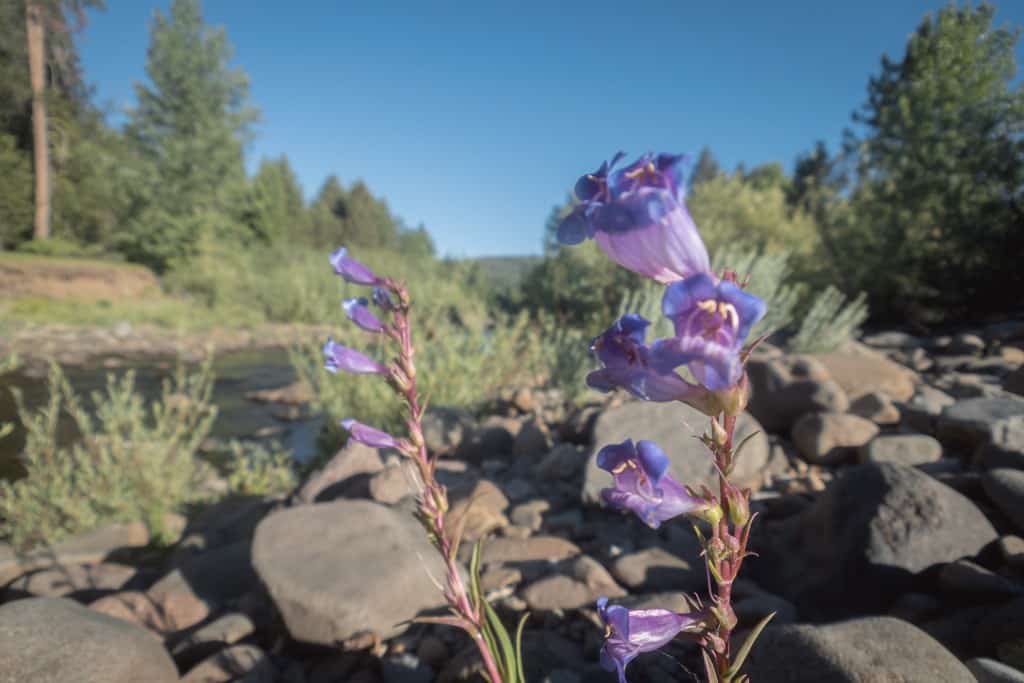Written by Martin Montejano
The days are getting longer and the weather is warming up. It’s almost that time of year where the transition away from colder days breathes new life into nature. Along with that, we move closer to those afternoons of watching a trout snatch a fly off the top of the water, inciting the excitement that we all seek. While we may not be there just yet, we keep our eyes on the creek, ready and waiting to cast some kebari onto the water.

What signs can you look for that signify the return of an environment that fish thrive in? In Daniel Galhardo's book tenkara he tells a story of the tenkara flower in Japan; a species of wisteria that blooms in the spring, marking the start of the season. Outside of Japan, there are tell-tale signs that, if you watch for, can give an indication of when your favorite waters start to liven up as trout become more active.
While the season progresses, keep an eye out for the signs that accompany high activity from trout. Observe some of your favorite fishing spots in the area, as well as other happenings around where you live. What do you notice that changes and coincides with the fishing season?
In line with Daniel’s story of the “tenkara flower”, take note of the flora. Some plants start to flower and bloom a little earlier than others, but which ones precede high trout activity? I’ve noticed with the bloom of most wildflowers comes active trout in the springtime. Further, into the season, foxglove seems to sprout up near active creeks as spring turns to summer. Closer to the water you may notice more aquatic plants flourishing. Waterweed offers great cover for fish, and strong roots at the base of tall grass jetting up out of the water is another good sign of a healthy creek.
While bugs don’t completely disappear in the winter, anyone who has spent some time fishing in the colder months could tell you that hatches become less common and more sporadic. You may not find layers of hatching mayflies on the surface film on those cold crisp days. As spring comes closer, the growing presence of flowers and foliage generally comes with an influx of bugs. Aside from the humming and buzzing that fills the air, you may see plenty of winged insects beginning to hover and bounce above the water in the slower sections, and even moving into the seams or toward spots where the current is a little faster. Below the surface, you can look to find plenty of larvae and pupa as well. Be sure to flip over a few rocks to see what’s hiding underneath! Remember to take note of the size and color, or even species of all of the bugs, both above and below the surface.

Moving away from the water, what other insects seem to have become more abundant in the surrounding areas? Bees and other pollinators such as butterflies become more active with the spring, buzzing and fluttering around, collecting pollen amidst the blossoms. While you may find plenty of them close to the water, they also tend to be active around town or in gardens in your neighborhood.
The higher volume of bugs brings birds! Outside of the return of larger birds who had migrated south, keep an eye out for smaller birds, such as finches, flying above the water as they return to feeding on insects in and around creeks and rivers. (Be sure to take a moment to listen to all the songs and chatter they bring. Chirping and singing birds in the morning and throughout the day is a good sign of the warmer weather and abundance of life around the water.) Another small group of pollinators that you may notice becoming more active is hummingbirds and sunbirds. In line with the bees, you’ll often find them flying around, collecting nectar from blooms. In accompaniment to the birds, quiet footsteps when approaching a stream may also give you a chance to observe other animals around the water. Squirrels and chipmunks become more active, as do deer and bears. Water often becomes a popular spot amongst the animals.

Between the flora and the fauna, taking a moment to observe the water and its surroundings can never do you wrong. As anglers, there’s always an appreciation for nature and the bounty it holds, be sure to take the time to take it all in. The observations don’t have to end with the spring either, continue to keep track of all different signs and changes that happen throughout the seasons. You may catch some little details that signify changes in fish behavior as spring turns to summer, summer to fall, and fall to winter.
Of course, one of the most exciting signs of high fish activity is watching a rise. Seeing a trout come up to the surface to snatch a bug off the top is one that never seems to get old.
Martin Montejano is a Northern California-based fixed-line angler. From spring-fed creeks in the mountains to rivers that run through deep-cut valleys, he fishes a multitude of waters in and around the Sierra Nevadas.
You can follow along as he shares his adventures and experiences at @sagehearttenkara on Instagram.
Martin’s favorite TUSA rod is the ITO™ 13′ / 14’7″ (adjustable)
